Growing Fennel for Beginners can seem daunting, but trust me, it’s easier than you think! Have you ever admired those feathery fronds and wondered how to cultivate your own supply of this versatile herb and vegetable? Well, you’re in the right place. For centuries, fennel has been cherished not only for its culinary uses but also for its medicinal properties. The ancient Romans, for example, believed it bestowed longevity and courage.
Today, we’re not necessarily looking for immortality (though a longer growing season would be nice!), but we *are* looking for fresh, flavorful ingredients right at our fingertips. That’s where this DIY guide comes in. Imagine stepping outside your door and snipping fresh fennel for your salads, soups, or even to chew on for its digestive benefits. No more expensive trips to the grocery store for wilted bunches!
This article is packed with simple, actionable tips and tricks to help even the most novice gardener succeed in growing fennel for beginners. We’ll cover everything from choosing the right variety to harvesting your bounty. So, grab your gardening gloves, and let’s get started on this exciting journey to fresh, homegrown fennel!
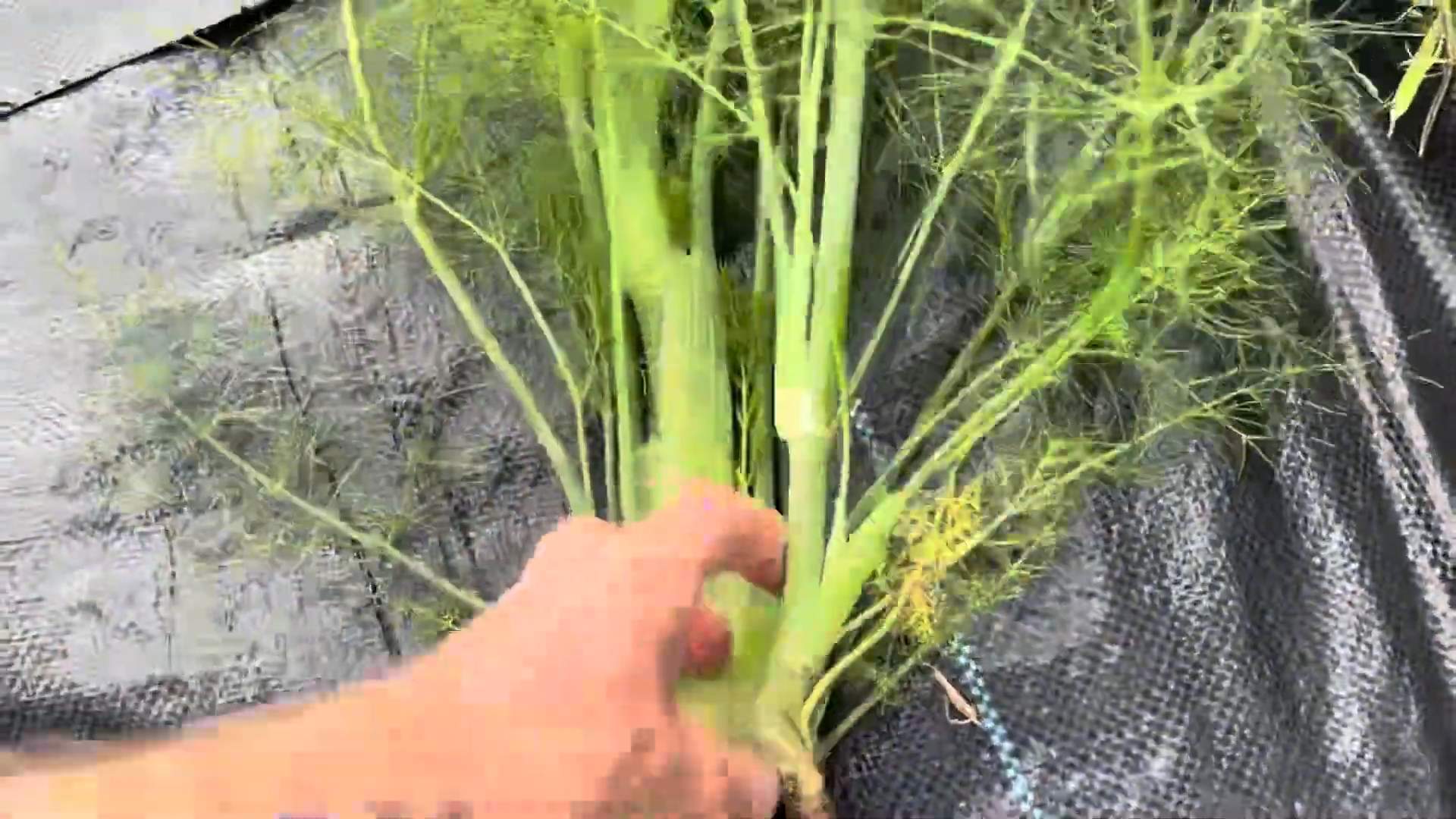
Growing Fennel: A Beginner’s Guide to This Aromatic Herb
Hey there, fellow gardening enthusiasts! I’m so excited to share my experience with growing fennel. It’s a fantastic herb that adds a unique flavor to dishes and attracts beneficial insects to your garden. Don’t be intimidated – it’s easier than you think! This guide will walk you through everything you need to know to successfully grow fennel, even if you’re a complete beginner.
Understanding Fennel: A Quick Overview
Before we dive in, let’s quickly understand what fennel is. There are two main types:
* **Bulb Fennel (Florence Fennel):** This is grown for its swollen bulb at the base, which has a mild anise-like flavor. The leaves and stalks are also edible.
* **Herb Fennel (Common Fennel):** This is grown primarily for its feathery leaves and seeds, which have a stronger anise flavor. It doesn’t produce a significant bulb.
This guide will focus on growing both, as the initial steps are very similar. I’ll point out the differences as we go along.
Choosing the Right Variety
Selecting the right variety is crucial for success. Here are a few popular choices:
* **For Bulb Fennel:** ‘Florence’, ‘Zefa Fino’, ‘Romanesco’. These varieties are known for producing large, well-formed bulbs.
* **For Herb Fennel:** ‘Bronze Fennel’ (adds beautiful color to your garden), ‘Sweet Fennel’. These are great for their flavorful leaves and seeds.
I personally love ‘Bronze Fennel’ because it adds a lovely visual element to my garden.
Getting Started: Planting Fennel
Fennel can be grown from seed or transplants. I prefer starting from seed because it’s more economical and allows the plant to establish a strong root system.
When to Plant
* **For Bulb Fennel:** Direct sow seeds in spring after the last frost or start seeds indoors 4-6 weeks before the last frost. For a fall harvest, sow seeds in mid-summer.
* **For Herb Fennel:** Direct sow seeds in spring or fall. It’s more tolerant of cooler temperatures than bulb fennel.
I usually start my bulb fennel indoors to get a head start, especially if I’m aiming for an early summer harvest.
Where to Plant
Fennel needs plenty of sunlight – at least 6-8 hours per day. Choose a location with well-drained soil. Avoid planting near dill, as they can cross-pollinate and affect the flavor.
Important Note: Fennel can be invasive in some areas, so consider planting it in a container to control its spread.
Preparing the Soil
Fennel prefers fertile, well-drained soil with a pH between 6.0 and 7.0. Before planting, amend the soil with compost or well-rotted manure to improve drainage and fertility.
Here’s what I do:
1. **Clear the area:** Remove any weeds, rocks, or debris.
2. **Loosen the soil:** Use a garden fork or tiller to loosen the soil to a depth of at least 12 inches.
3. **Add compost:** Mix in a generous amount of compost (about 2-3 inches) into the soil.
4. **Smooth the surface:** Rake the soil to create a smooth, even surface.
Step-by-Step Planting Guide
Now for the fun part – planting!
1. **Starting Seeds Indoors (Optional):**
* Fill seed trays or small pots with seed-starting mix.
* Sow seeds about ¼ inch deep.
* Water gently and keep the soil consistently moist.
* Place the trays in a warm, sunny location or under grow lights.
* Once the seedlings have a few sets of true leaves, they’re ready to be transplanted outdoors.
2. **Direct Sowing Seeds Outdoors:**
* Sow seeds about ¼ inch deep and 1-2 inches apart.
* Gently water the soil.
* Once the seedlings emerge, thin them to 12-18 inches apart for bulb fennel and 6-12 inches apart for herb fennel.
3. **Transplanting Seedlings:**
* Harden off the seedlings by gradually exposing them to outdoor conditions for a week before transplanting.
* Dig holes that are slightly larger than the root balls.
* Carefully remove the seedlings from their containers and place them in the holes.
* Backfill with soil and gently firm around the base of the plants.
* Water thoroughly.
Caring for Your Fennel Plants
Once your fennel plants are in the ground, it’s important to provide them with proper care to ensure healthy growth.
Watering
Fennel needs consistent moisture, especially during hot, dry weather. Water deeply whenever the top inch of soil feels dry. Avoid overwatering, as this can lead to root rot.
I usually water my fennel plants every 2-3 days, depending on the weather.
Fertilizing
Fennel is a moderate feeder. Apply a balanced fertilizer (e.g., 10-10-10) every 4-6 weeks during the growing season. You can also side-dress with compost or well-rotted manure.
I prefer using organic fertilizers like fish emulsion or seaweed extract.
Weeding
Keep the area around your fennel plants free of weeds. Weeds compete for nutrients and water, which can stunt the growth of your fennel.
I like to mulch around my plants with straw or wood chips to suppress weeds and retain moisture.
Pest and Disease Control
Fennel is generally pest-resistant, but it can be susceptible to aphids and slugs.
* **Aphids:** Spray with insecticidal soap or neem oil.
* **Slugs:** Handpick them off the plants or use slug bait.
I’ve found that attracting beneficial insects like ladybugs and lacewings can help control aphid populations naturally.
Fennel is also relatively disease-resistant, but it can be affected by root rot if the soil is poorly drained.
Harvesting Fennel
Harvesting time depends on the type of fennel you’re growing.
Harvesting Bulb Fennel
The bulb is ready to harvest when it reaches the size of a tennis ball (about 2-3 inches in diameter).
1. **Loosen the soil:** Gently loosen the soil around the base of the plant.
2. **Pull the bulb:** Carefully pull the bulb from the ground.
3. **Trim the stalks:** Cut off the stalks and leaves, leaving about 1-2 inches attached to the bulb.
4. **Store the bulb:** Store the bulb in the refrigerator for up to a week.
I love using the bulb in salads, soups, and roasted vegetable dishes.
Harvesting Herb Fennel
You can harvest the leaves of herb fennel throughout the growing season. Simply snip off the leaves as needed.
To harvest the seeds:
1. **Wait for the seeds to mature:** The seeds are ready to harvest when they turn brown and dry.
2. **Cut the seed heads:** Cut off the seed heads and place them in a paper bag.
3. **Dry the seeds:** Allow the seeds to dry completely in a cool, dry place.
4. **Separate the seeds:** Shake the bag to separate the seeds from the seed heads.
5. **Store the seeds:** Store the seeds in an airtight container in a cool, dry place.
I use the leaves in salads, as a garnish, and to flavor fish and poultry dishes. The seeds are great for adding a licorice flavor to breads, sausages, and other dishes.
Bolting: What to Do When Fennel Flowers
Fennel is prone to bolting (flowering) in hot weather. When this happens, the bulb becomes tough and the leaves become bitter.
To prevent bolting:
* **Plant at the right time:** Avoid planting bulb fennel during the hottest part of the summer.
* **Provide consistent moisture:** Water regularly to prevent the plants from drying out.
* **Harvest the bulb early:** Harvest the bulb before it gets too large.
If your fennel does bolt, you can still use the leaves and seeds. The flowers are also edible and attract beneficial insects.
Troubleshooting
Here are a few common problems you might encounter when growing fennel:
* **Bulb doesn’t form:** This can be caused by poor soil, lack of sunlight, or hot weather. Make sure your plants have plenty of sunlight, well-drained soil, and consistent moisture.
* **Plants bolt prematurely:** This is usually caused by hot weather or stress. Try planting at a different time of year or providing more shade.
* **Aphids:** Spray with insecticidal soap or neem oil.
* **Slugs:** Handpick them off the plants or use slug bait.
Enjoying Your Harvest
Fennel is a versatile herb that can be used in a variety of dishes. Here are a few
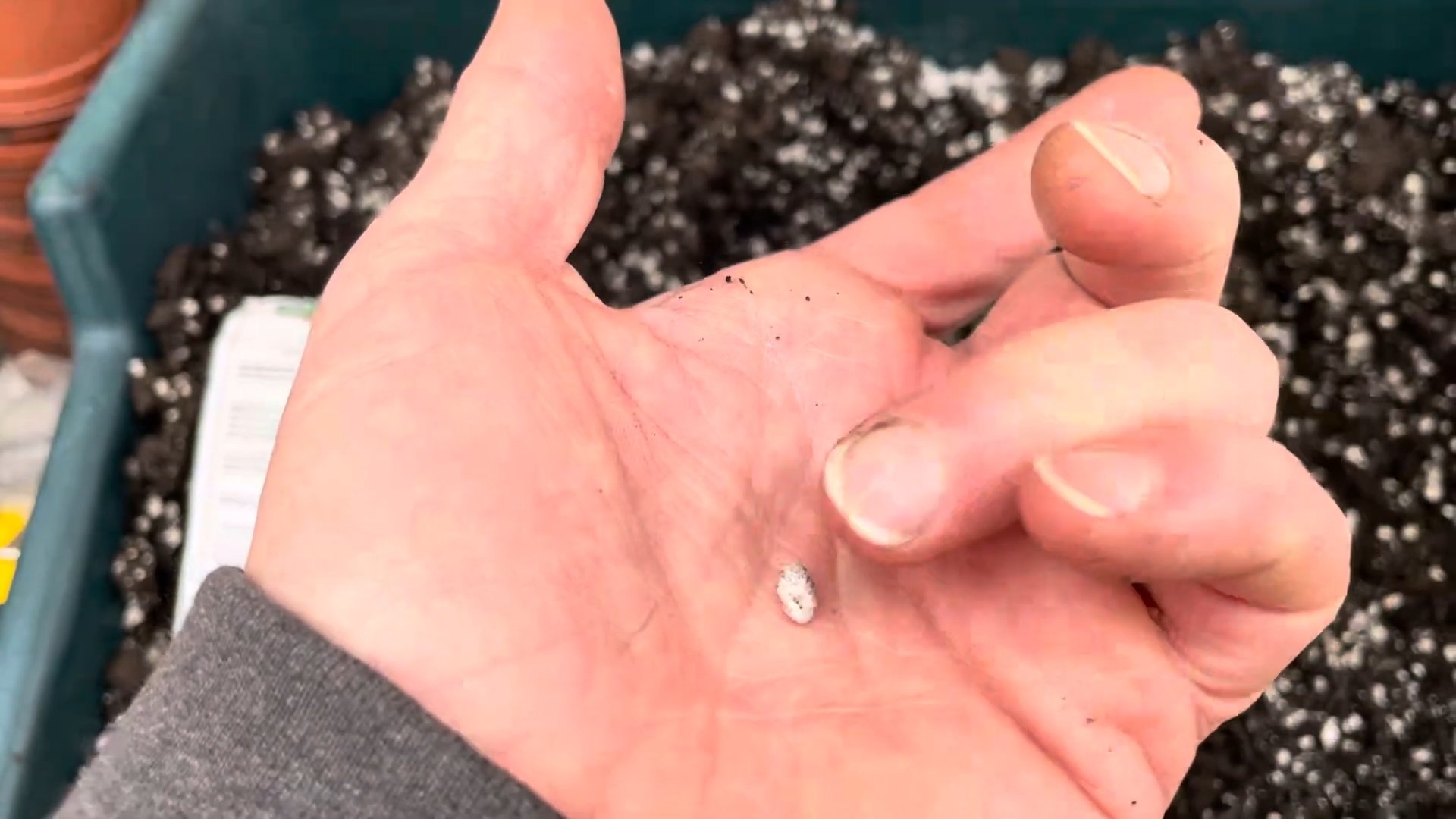
Conclusion
So, there you have it! Growing fennel, even for beginners, is entirely achievable and incredibly rewarding. We’ve walked through the essential steps, from selecting the right variety to harvesting your flavorful bounty. But why should you bother with this DIY project when you can simply buy fennel at the grocery store? The answer lies in the unparalleled freshness and flavor you’ll experience with homegrown fennel. Store-bought fennel often lacks the vibrant anise-like taste that makes this vegetable so special. When you grow your own, you control the entire process, ensuring optimal conditions for flavor development.
Beyond the superior taste, growing fennel offers a connection to nature and a sense of accomplishment. There’s something deeply satisfying about nurturing a plant from seed to harvest, knowing you’ve provided it with everything it needs to thrive. Plus, you’ll have a constant supply of fresh fennel bulbs, fronds, and seeds for all your culinary adventures.
But the benefits don’t stop there! Consider these exciting variations to elevate your fennel-growing experience:
* **Bronze Fennel:** For a visually stunning addition to your garden, try growing bronze fennel. Its feathery, dark foliage adds a dramatic touch, and the flavor is just as delightful as green fennel.
* **Florence Fennel vs. Herb Fennel:** Remember to choose the right type! Florence fennel is cultivated for its bulb, while herb fennel is grown primarily for its leaves and seeds. Select the variety that best suits your culinary needs.
* **Companion Planting:** Fennel is known to attract beneficial insects like ladybugs and hoverflies, which can help control pests in your garden. Plant it near other vegetables to create a thriving ecosystem. However, be mindful that fennel can inhibit the growth of some plants, so research companion planting carefully.
* **Container Gardening:** If you have limited space, don’t despair! Fennel can be successfully grown in containers, provided you choose a large enough pot and ensure proper drainage.
Growing fennel is more than just a gardening project; it’s an investment in fresh, flavorful food and a connection to the natural world. It’s a chance to learn new skills, experiment with different varieties, and enjoy the fruits (or rather, bulbs) of your labor.
We wholeheartedly encourage you to give this DIY trick a try. Start small, be patient, and don’t be afraid to experiment. The rewards are well worth the effort. And most importantly, we want to hear about your experiences! Share your tips, successes, and challenges in the comments below. Let’s create a community of fennel enthusiasts and learn from each other. What variety did you choose? What dishes are you planning to make with your homegrown fennel? We can’t wait to hear your stories! Happy gardening!
Frequently Asked Questions (FAQ)
What is the best time of year to plant fennel seeds?
The ideal time to plant fennel seeds depends on your climate. In regions with mild winters, you can sow seeds directly into the ground in early spring or late summer/early fall. For colder climates, start seeds indoors 6-8 weeks before the last expected frost and transplant them outdoors after the danger of frost has passed. Starting indoors gives the seedlings a head start and protects them from harsh weather conditions. Remember that fennel prefers cooler temperatures, so avoid planting during the hottest months of summer.
How much sunlight does fennel need?
Fennel thrives in full sun, requiring at least 6-8 hours of direct sunlight per day. Insufficient sunlight can result in leggy growth and reduced bulb development. Choose a location in your garden that receives ample sunlight throughout the day. If you’re growing fennel in containers, make sure to place them in a sunny spot. If you live in a particularly hot climate, some afternoon shade can be beneficial to prevent the plant from scorching.
What kind of soil is best for growing fennel?
Fennel prefers well-drained, fertile soil with a slightly acidic to neutral pH (6.0-7.0). Amend your soil with compost or other organic matter to improve drainage and fertility. Avoid heavy clay soils, as they can become waterlogged and hinder root development. If you’re growing fennel in containers, use a high-quality potting mix that drains well. Regular soil testing can help you determine the pH level and nutrient content of your soil, allowing you to make necessary adjustments.
How often should I water fennel?
Fennel needs consistent moisture, especially during bulb development. Water deeply whenever the top inch of soil feels dry to the touch. Avoid overwatering, as this can lead to root rot. Mulching around the base of the plant can help retain moisture and suppress weeds. During hot, dry weather, you may need to water more frequently. Check the soil moisture regularly to ensure your fennel is getting enough water.
When is fennel ready to harvest?
Florence fennel is typically ready to harvest 80-100 days after planting. The bulb should be about the size of a tennis ball. To harvest, use a sharp knife to cut the bulb at the base of the plant. You can also harvest the fronds (leaves) as needed throughout the growing season. The seeds can be harvested when they turn brown and dry. Cut the seed heads and hang them upside down in a paper bag to dry completely. Once dry, shake the seeds out of the bag.
Why is my fennel bulb not forming properly?
Several factors can contribute to poor bulb development in fennel. Insufficient sunlight, overcrowding, and inconsistent watering are common culprits. Make sure your fennel is getting enough sunlight, thin out seedlings to provide adequate spacing, and water regularly. Soil fertility can also play a role. Amend your soil with compost or fertilizer to provide the necessary nutrients. Bolting (premature flowering) can also prevent bulb development. Choose bolt-resistant varieties and avoid planting during hot weather to minimize the risk of bolting.
Can I eat the entire fennel plant?
Yes, the entire fennel plant is edible! The bulb is the most commonly consumed part, but the fronds, stalks, and seeds are also delicious. The fronds can be used as a garnish or added to salads and soups. The stalks can be chopped and used in stir-fries or stews. The seeds have a strong anise flavor and can be used as a spice in various dishes. Don’t let any part of your fennel plant go to waste!
Is fennel a perennial or an annual?
Fennel is technically a short-lived perennial in zones 4-9, but it is often grown as an annual, especially Florence fennel. In colder climates, the plant may not survive the winter. Even in warmer climates, the bulb quality may decline after the first year. For best results, it’s generally recommended to grow fennel as an annual and replant it each year. Herb fennel is more likely to survive as a perennial, but it may still benefit from being replanted every few years to maintain its vigor.
Does fennel attract any pests or diseases?
Fennel is generally resistant to pests and diseases, but it can occasionally be affected by aphids, slugs, and snails. Aphids can be controlled with insecticidal soap or by introducing beneficial insects like ladybugs. Slugs and snails can be deterred with beer traps or copper tape. Root rot can occur in poorly drained soil. Ensure proper drainage and avoid overwatering to prevent root rot. Regularly inspect your plants for any signs of pests or diseases and take action promptly to prevent them from spreading.
Can I grow fennel in a container?
Yes, fennel can be successfully grown in containers, but you’ll need to choose a large enough pot (at least 12 inches in diameter) to accommodate the plant’s root system. Use a high-quality potting mix that drains well and ensure the container has drainage holes. Place the container in a sunny location and water regularly. Container-grown fennel may require more frequent watering and fertilization than fennel grown in the ground. Choose a compact variety of fennel for container gardening.

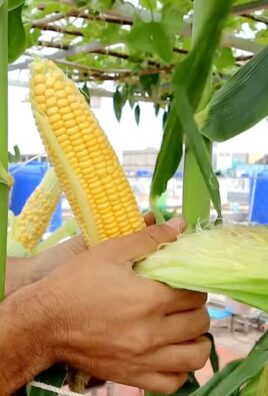
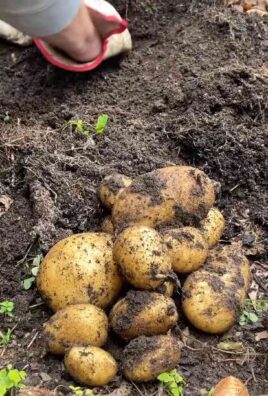
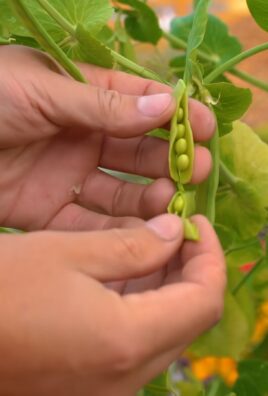
Leave a Comment